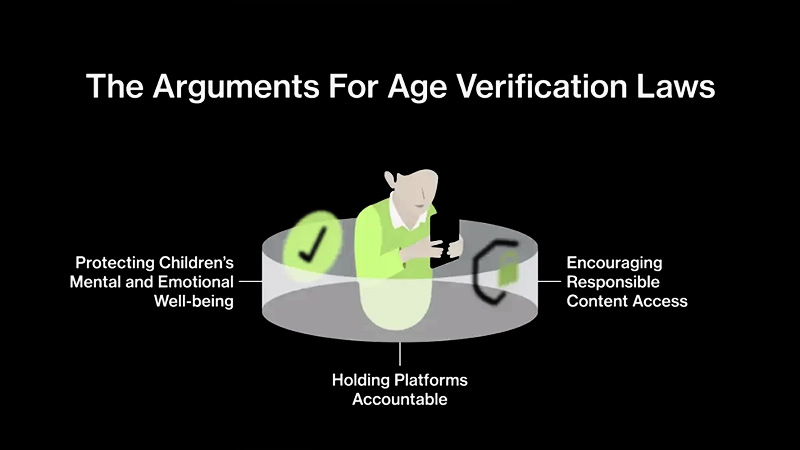Adult websites—the inhabitants of those shadowy corners of the internet—have undergone a profound transformation driven by advances in technology.
What began in the late 1990s and early 2000s as simple collections of static images and low-resolution videos has blossomed into vast, intricate ecosystems influenced by technology, culture, regulation, and economics. But in the more modern era of the internet, the landscape is worlds apart from those early days.
Adult websites have evolved into sophisticated multimedia platforms, often functioning much like major social networks or streaming services.
Industry giants alongside countless smaller sites have fueled this shift by offering free ad-supported streaming, premium subscriptions, user-generated content, live broadcasts, and immersive experiences such as virtual reality and cam shows. With the rise of mobile browsing, most users now access content via smartphones, which has reshaped both site design and delivery methods.
To safeguard adult content from being viewed by minors, many websites implement an initial prompt to confirm that visitors are consenting adults who intentionally chose to access the material—not accidental arrivals.
This is where the iconic “Are you over 18?” prompt has long been a staple on pornographic sites.

It’s a simple approach, but ultimately a flimsy gatekeeper—more of a polite suggestion than a genuine barrier.
For many years, adult websites depended almost exclusively on this straightforward self-declaration method, presenting users with a prompt or checkbox asking if they were of legal age, often accompanied by a button or box labeled “Yes, I am over 18” or “Enter.”
But with governments worldwide stepping up their regulatory pressure, they started imposing stringent age verification laws to protect minors. This has pushed sites to adopt complex identity checks using AI, biometric scans, or third-party verification services.
This was when the websites started implementing credit card or bank verification. This requires visitors to submit information about their working credit/debit card or bank account as proof of adulthood. The method is fairly reliable since minors rarely have valid cards—but risks misuse or parental sharing.
The second method is requiring visitors to upload government-issued documents, like ID, driver’s license, passport, or use live document scanning. The vendor verifies authenticity, matches with selfie and performs liveness detection.
These method pose serious privacy concerns.
While simple “Yes, I’m over 18” clicks are harmless from a data perspective, the two aforementioned methods carry more serious privacy implications.
When adult websites move beyond self-declaration to more robust methods, such as requiring users to upload government-issued IDs, submit credit card information, or use biometric facial scans, they start handling highly sensitive personal data. This data can include users' full name, date of birth, ID numbers, photos of their face, and even live video feeds.

The risks come in several forms:
- Data breaches: Adult sites and their third-party verification vendors become lucrative targets for hackers. If these systems don’t have airtight security, personal identity documents or biometric data could be leaked, exposing users to identity theft, fraud, or harassment.
- Data storage and retention: Even when companies claim to delete or anonymize data after verification, in practice some may store it longer than necessary or fail to properly secure it. The more data collected, the greater the risk.
- Surveillance and profiling: Collecting biometric and ID data raises concerns about surveillance—tracking who visits adult content and potentially profiling users in ways that feel invasive or chilling, especially in more restrictive countries.
- Third-party risks: Many adult websites rely on third-party vendors to handle verification. This means users’ private data is shared beyond the site they’re visiting, multiplying privacy vulnerabilities.
- Lack of transparency: Users often don’t know exactly how their data is used, stored, or shared. Terms and conditions can be complex or vague, leaving people unaware of potential privacy compromises.
- False sense of security: Some platforms claim anonymization or zero-knowledge proofs, but implementation varies widely. Without strong audits, users can’t be sure their identity data is truly protected.
So while these verification methods help keep minors out, they come with a trade-off—users must entrust deeply personal information to platforms that may not always handle it with perfect care. It’s a risky balancing act between safety and privacy.
Then comes AI.
The convergence of AI has ignited a technological shift that is as transformative as it is controversial.
Among the many facets of this intersection, AI-powered age verification stands out as one of the most consequential, altering the way adult websites manage access, legality, privacy, and user experience. As regulations tighten across the globe, adult content platforms are being forced to adopt sophisticated, AI-driven identity gatekeeping systems that go far beyond the traditional “Are you over 18?” checkboxes that once dominated the industry.
At the heart of this shift is facial age estimation technology—a branch of computer vision that uses machine learning models to assess whether a user appears old enough to legally access adult content.
This method leverages convolutional neural networks (CNNs), often trained on massive datasets containing millions of faces labeled with age metadata.
These models don’t just scan for wrinkles or facial features; they analyze complex patterns like skin texture, bone structure, and even lighting conditions to estimate age with surprisingly high accuracy, often in the 95–99% range.
What makes these systems particularly attractive for adult websites is that they can perform these checks in real-time, often within milliseconds, and without requiring users to upload personal documents.

This anonymous yet robust verification mechanism is especially favored in regions where data privacy laws like GDPR or the UK’s Data Protection Act prohibit platforms from retaining personally identifiable information unless absolutely necessary.
Many adult sites now integrate APIs from AI identity vendors.
These APIs typically include a front-end SDK that triggers a user selfie via webcam or smartphone, sends the data to a remote inference engine, and returns an “age-verified” flag without permanently storing the image or metadata—sometimes using edge computing to enhance security. To prevent spoofing attempts (like holding up a photo of an older person), these systems include liveness detection, which verifies the presence of a live human using eye blink detection, micro-expressions, or depth perception via dual-lens cameras.
But while facial age estimation is gaining traction, it is not the only AI-driven solution being deployed.
Natural language processing (NLP) models are also employed in content classification and metadata tagging, ensuring that certain age-restricted keywords or categories are correctly flagged for regulatory compliance. Furthermore, reinforcement learning models are beginning to play a role in behavioral pattern analysis—tracking how users navigate websites to identify potential underage access patterns or fraudulent behavior without relying solely on front-end verification.
Behind the scenes, the infrastructure to support these AI systems is becoming increasingly complex.
Many adult websites now rely on hybrid cloud environments where age verification data is processed in isolated containers, often in compliance with national or regional data localization requirements.
Encryption-at-rest and end-to-end transport security (TLS 1.3 or higher) are mandated by most third-party verification partners, ensuring that sensitive image data—even if ephemeral—never becomes a liability. Some platforms are even exploring the use of federated identity systems, where users verify their age once via a digital ID wallet (stored on their device) and receive a cryptographic token they can use across multiple adult platforms, minimizing exposure of their personal data.
But of course, no system is without its flaws.

With age verification becomes smarter, people are flocking towards anonymity where they don't have to do anything. As a result, VPN circumvention remains a widespread method for bypassing regional restrictions.
Soon after governments legally required visitors of adult websites to have their age checked using AI, VPN usage has surged by over 500% in some areas.
Additionally, AI age estimators, while powerful, are not immune to exploitation. There are cases where users bypassed age checks by uploading stylized video game avatars from a game, which tricked the facial estimation algorithms into registering them as adults. Hackers have also managed to circumvent the AI-powered verification system using specialized software.
The debate over these AI systems is also ideological. Privacy advocates argue that even anonymized age checks represent a step toward a surveillance-based internet, where sensitive biometric data becomes normalized.
Meanwhile, proponents argue that these tools are necessary to protect minors in an increasingly online world, and that AI is the only scalable way to enforce such protections across the fragmented global landscape of adult content hosting.
Adult platforms themselves are caught in the middle—balancing the need to comply with evolving legal frameworks while maintaining user engagement and protecting brand reputation.
In the end, the integration of AI into age verification on adult websites is more than just a technical upgrade—it represents a redefinition of access, trust, and responsibility in an industry that has long operated on the edges of digital regulation.
While this kind of system will forever have flaws, one thing is certain: the era of anonymous clicks into the adult web is fading, replaced by algorithms that not only see but evaluate who we are before we ever hit "Enter."
